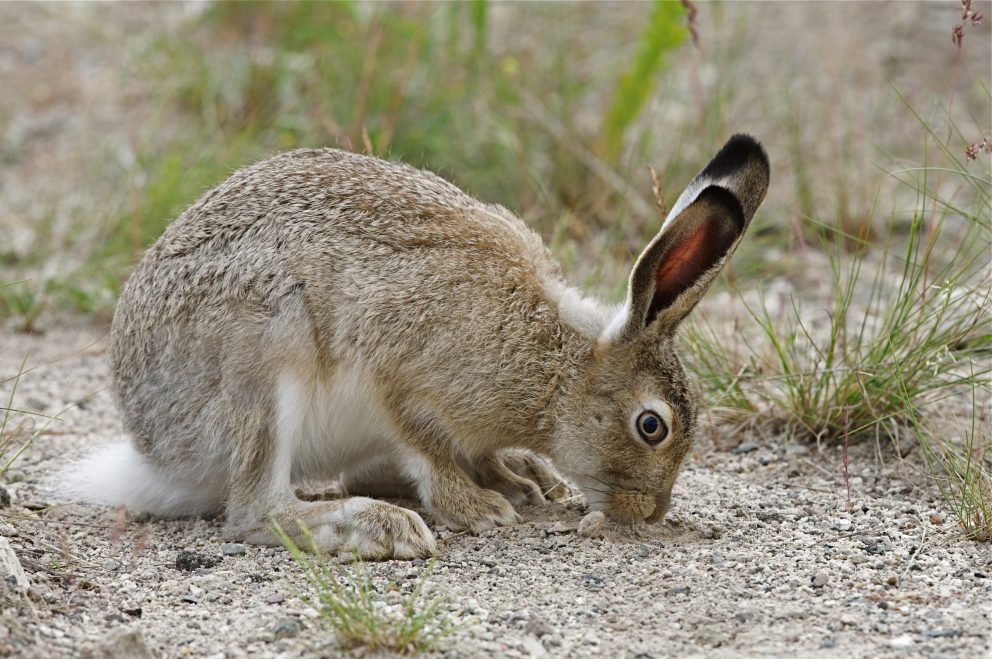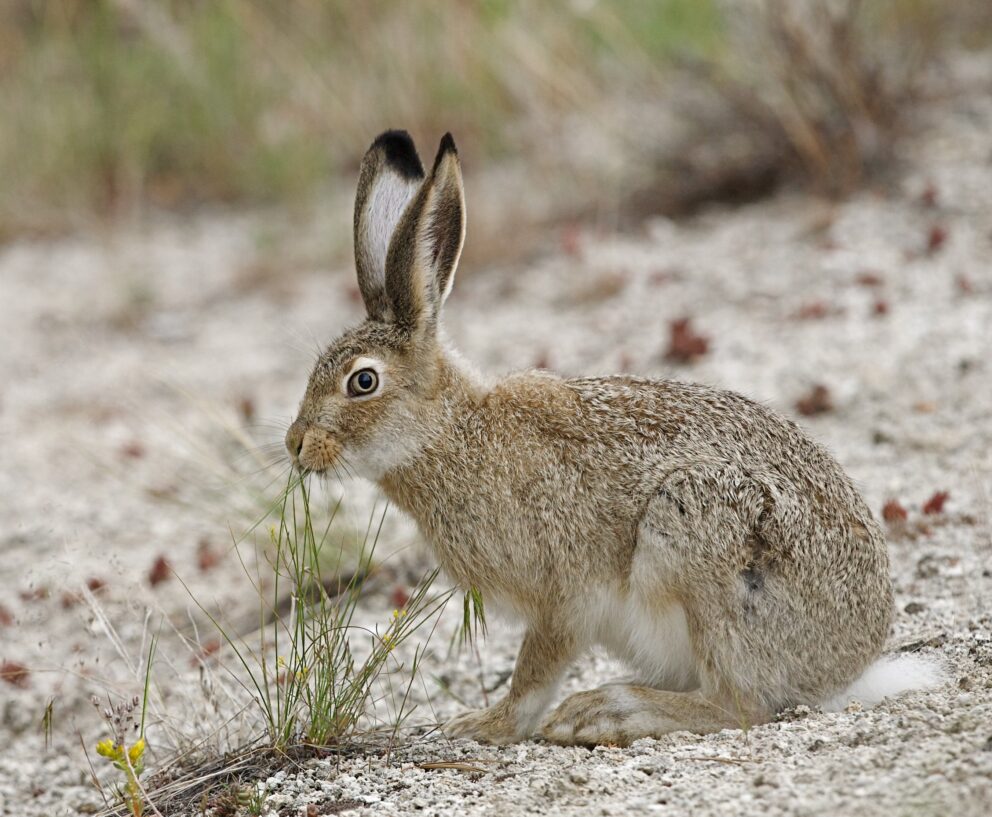- SCIENTIFIC NAME
- Lepus townsendii
- CLASSIFICATION
- Mammal
- LIFE SPAN
- 1-5 Years
- SIZE
- 22-26” | 6.6-13lbs
- STATE CONSERVATION STATUS
-
- State Protected
- FEDERAL CONSERVATION STATUS
- Least Concern
- GAME STATUS
- Game
- GAME TYPE
- Upland Game
- Washoe
- Humboldt
- Pershing
- Churchill
- Mineral
- Lyon
- Douglas
- Carson City
- Storey
- Elko
- Lander
- Eureka
- White Pine
- Esmeralda
- Nye
- Lincoln
- Clark
Habitat & Range
White-tailed Jackrabbits prefer open grasslands, pastures, and fields and can also be found living in forested areas and high alpine tundra.
- Cold desert shrubland and sagebrush
- Grasslands
- Upland Forests
Threats
- Habitat Degradation
- Predation
Natural History
The White-tailed Jackrabbit is a strict herbivore. In the summer they eat mostly green plants and flowers that are high in water content. They are nocturnal, feeding mainly from sunset to sunrise and resting during the day under plant cover in shallow depression dug out in the soil called “forms.” This species breeds during early summer and females will bear multiple litters of one to eleven young each year. The young, known as “leverets,” are born fully furred with their eyes open. Females only nurse the offspring for two to three days and are not seen with their young after that. The females do not make a formal nest, they will give birth and raise their young in the ‘forms’ they create under plant cover. Males, called bucks, fight furiously during the mating season, mostly by kicking out with their hind feet and biting when they can. White-tailed Jackrabbits are an important prey source for predators in the area including foxes, coyotes, bobcats, mountain lions, badgers, snakes, and even raptors (owls, eagles, and hawks). These jackrabbits will lie perfectly still in their forms to avoid being eaten, relying on camouflage to blend into their environment.
Fun Facts














